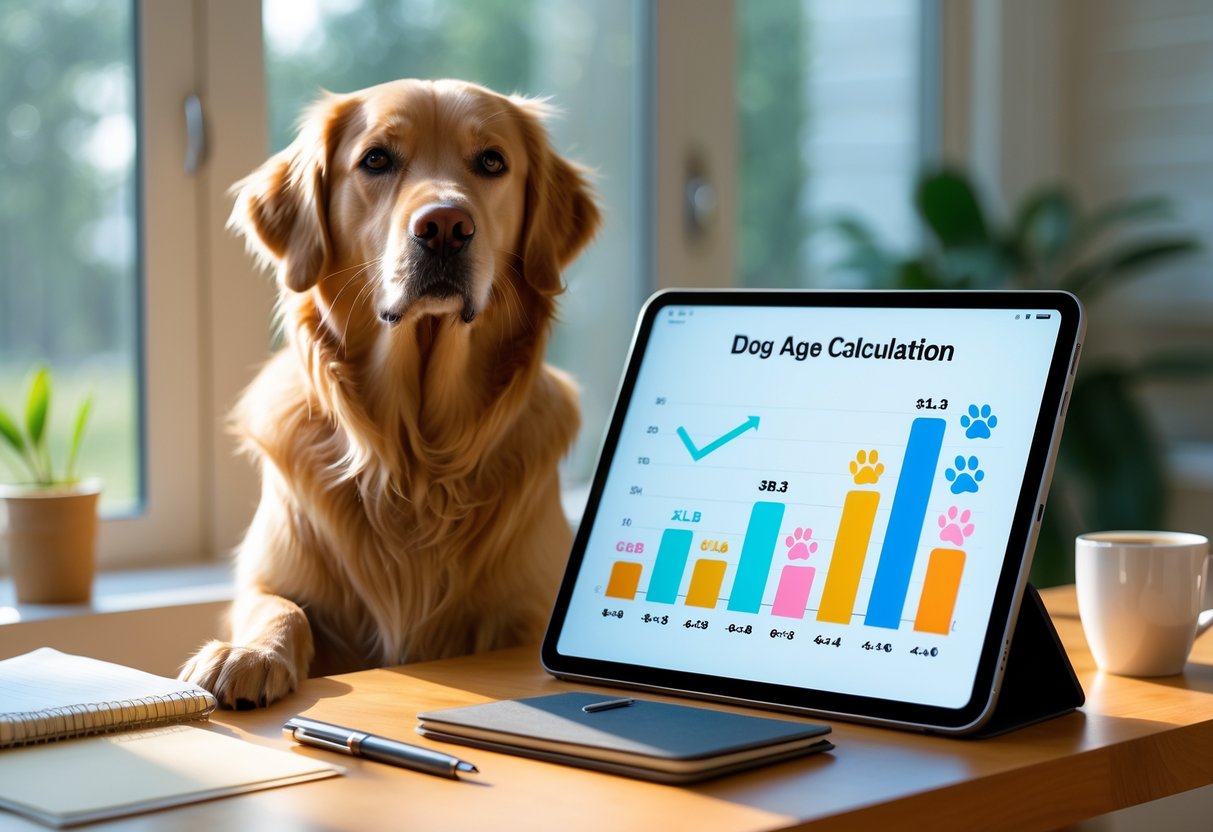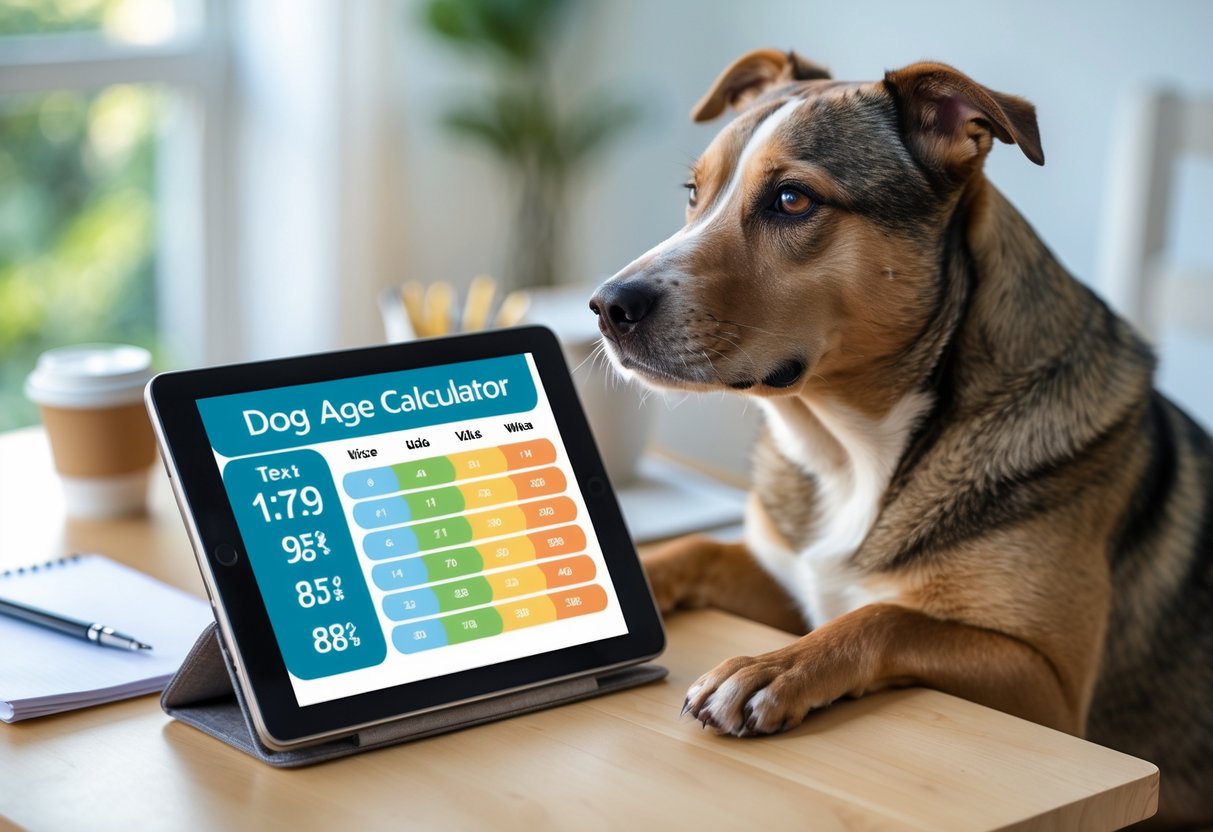Dog Age Calculator Guide for Accurate Pet Aging and Care

Many dog owners wonder how old their pets are in human years. A dog age calculator helps by converting a dog’s actual age into a human equivalent. This tool offers a simple way to understand your dog’s stage of life by considering factors like breed, size, and age.
Dogs age at different rates depending on their breed and size, so the calculator uses specific formulas to give a more accurate estimate. It goes beyond the old idea that one dog year equals seven human years.
Using a dog age calculator can help owners better care for their pets by understanding their needs at each life stage. It also makes it easier to track health changes and provide appropriate care as dogs get older.
Dog Age Calculator 🐾
Key Takeways
- A dog age calculator converts dog years to human years using breed and size.
- Different breeds and sizes age at different rates.
- Knowing a dog’s human age helps owners give better care.
How Dog Age Calculators Work

Dog age calculators estimate a dog’s age in human years by using specific formulas and factors. They improve on the old “one dog year equals seven human years” idea to give more accurate results based on breed, size, and life stage.
Understanding Dog Age vs. Human Age
Dogs age at different rates than humans. The first years of a dog’s life correspond to more human years because puppies grow and mature quickly. After this rapid growth, the aging process slows down but varies depending on the dog’s breed and size.
For example, small dogs tend to live longer and age more slowly after their early years. Large dogs age faster and often reach old age sooner. This difference means one formula cannot fit all dogs, requiring calculators to adjust based on these factors.
Formula and Methodologies
Modern dog age calculators use formulas based on scientific studies. They often count the first dog year as about 15 human years, and the second year as around 9 to 12 human years. After that, each additional year is fewer human years and depends on the dog’s size category: small, medium, or large.
Some calculators provide breed-specific results using weight and growth patterns. This method is more accurate than the simple “7 years” rule and better reflects real aging differences among dogs.
Key Factors Affecting Calculations
Several factors influence how dog age calculators work:
- Breed Size: Small, medium, and large breeds age differently.
- Weight: Heavier dogs often age faster.
- Breed Type: Some breeds mature quicker and have shorter lifespans.
- Early Life Stage: The first two years count for more human years due to rapid growth.
Calculators combine these elements to adjust the age estimate more precisely for each dog, giving owners better insight into their pet’s life stage.
Factors Influencing Dog Age Calculation

Several key elements affect how a dog’s age is converted into human years. These include physical traits like breed and size, as well as health and daily care habits. Understanding these helps provide a more accurate age estimate.
Breed and Size Variations
Breed and size play a major role in aging rates. Smaller dogs, such as Chihuahuas and Dachshunds, generally live longer and age more slowly. Large breeds like Great Danes and Mastiffs grow quickly but tend to have shorter lifespans.
Early growth is faster in large dogs, which causes more wear on their bodies. Breed-specific traits also influence life expectancy. For example, some breeds have genetic risks affecting health and longevity.
Age calculators often adjust results based on these differences. This helps owners see a better comparison between their pet’s age and human years, depending on their dog’s unique breed and size.
Health and Lifestyle Considerations
Health and lifestyle are important in determining a dog’s biological age. Regular exercise, good nutrition, and veterinary care slow aging effects. Dogs with balanced diets and routine checkups often stay healthier longer.
Chronic illnesses or obesity can accelerate aging and lower life expectancy. Stress levels and living environment also matter. Dogs in calm homes and safe spaces tend to have better overall wellness.
These factors don’t change the dog’s calendar age but affect how they feel and function over time. Age calculators that include health conditions provide a clearer picture of the dog’s true stage of life.

Frequently Asked Questions
Dog age calculation depends on factors like size, breed, and exact age. The rate dogs age is not constant and changes after their first year. Different methods exist to convert dog years to human years based on these details.
